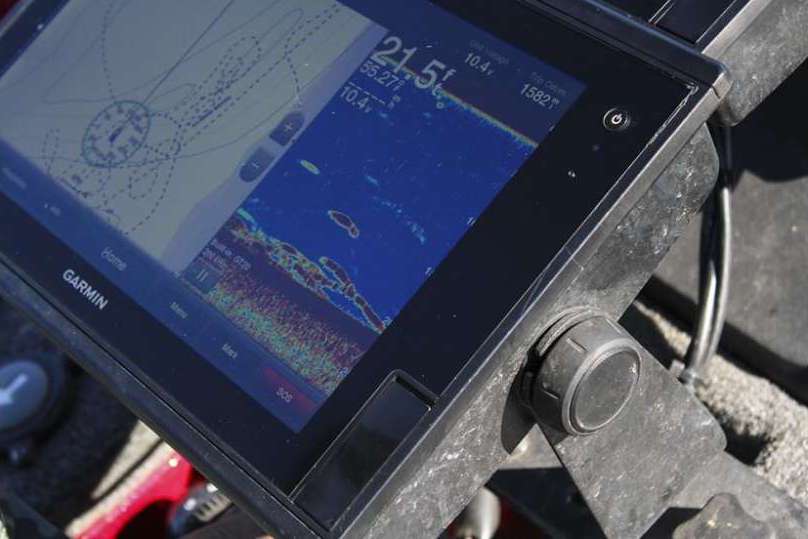
A couple of weeks ago Bryan Partak — who looks to be a serious bass angler — posted a question. He wanted to know about Rule 2. Well Bryan, here we go…
Rule 2 says that after you find the bass you should figure out whether they are on the bottom or suspended. Once you do that you can adjust your presentation and your technique for maximum efficiency. The A.R.E. Truck Caps Bassmaster Elite at Lake Okeechobee is an excellent example of what I’m saying.
Even though I was fishing in about 2 foot of water, some of the bass I caught were on the bottom and some of them were suspended. The smaller bass were on the bottom. I’d drag or short-hop my bait to catch them. The big ones were suspended. They’d hit the lure as soon as it hit the water. I never took one of them off the bottom.
Where they will be at any given time is complicated and not totally consistent. But, if you’re fishing shallow it’s pretty easy to figure it out. Let your bait fall all the way to the bottom and drag it or short-hop it. If you don’t get bit pull it up to the surface and see if they bite it. After you’ve caught a couple you should be able to figure things out and adjust your fishing to whatever’s happening.
One thing about this, though, that you should keep in mind is that sometimes different size fish are holding in the water column at different depths even though they’re in the same place. What I just said about Okeechobee is an example of that.
If you’re fishing a place and catching smaller bass at one depth, try fishing at a different depth. There’s only a short time in the spring when big bass are mixed in with little bass. One- and 2- pound bass aren’t like 5- and 10-pound bass.
One tip that I can give you about all of this is that water color seems to have a big impact on how deep the bass will hold, especially if the water’s real shallow. It seems to me that when the water’s dirty or muddy the bass will suspend more. They don’t like to be on the bottom when it’s real dark. I think that’s because they can’t see.
Here’s the deal: We all talk a lot about a bass’ lateral line and about their ability to smell. That’s fine. It’s probably true. But in the end they’re sight feeders. They see bait, and they attack it. They see our lures, and they attack them. When they can’t see they don’t do either.
Another tip is that water temperature matters. If they’re under something thick in cold water but the sun is out and shining, they’re much more likely to be up high under the mat or heavy overhead cover. I’ve actually seen them touching the underside of a mat under those conditions.
We used to see that a lot. Back when we fished winter Florida tournaments it was common to run around the lake and look for dead mats. Most of them were dark so they held the heat from the sun and warmed the water underneath. The bass would get up so close to them that it was hard to get a hookset. They’d grab whatever you pitched the second it broke through the canopy.
Next time we’ll talk about holding depth in deeper water conditions.

